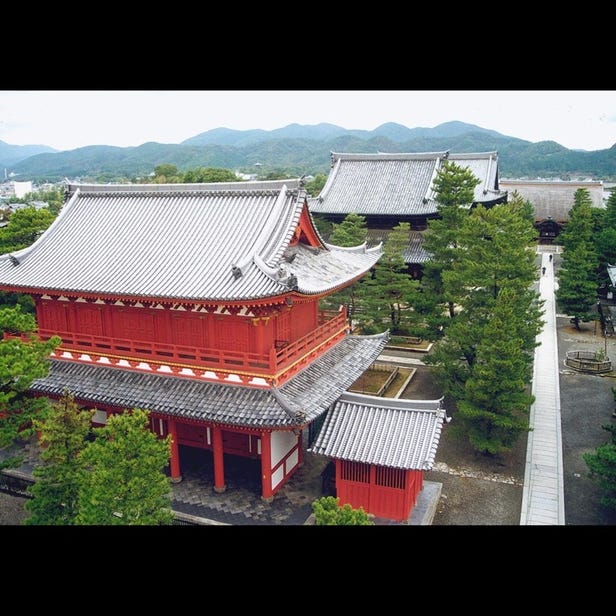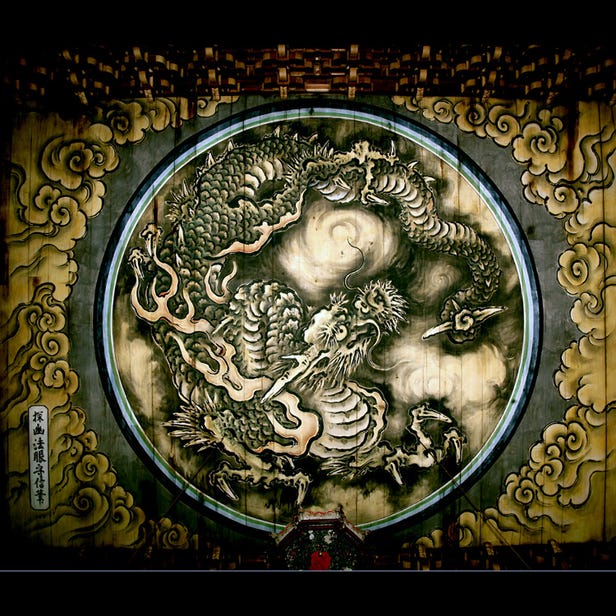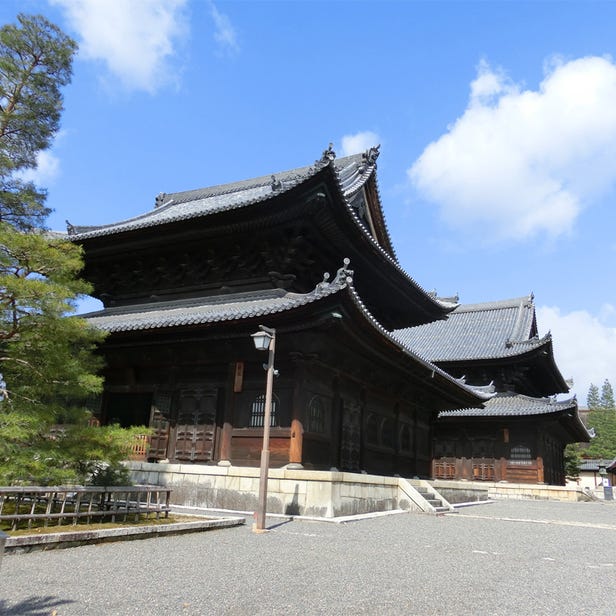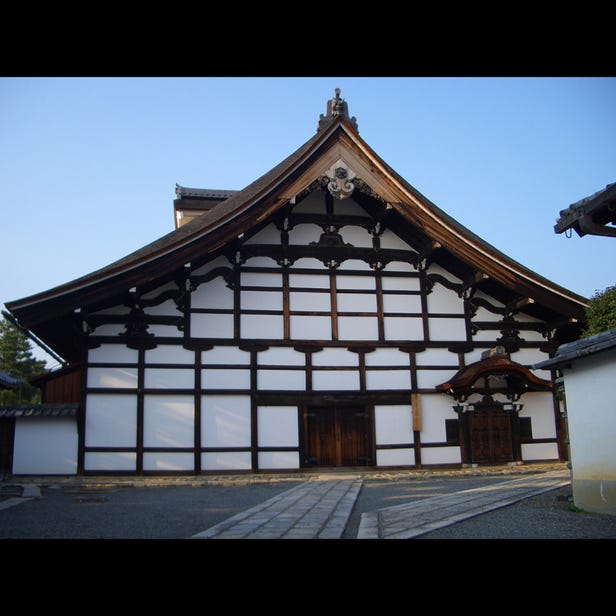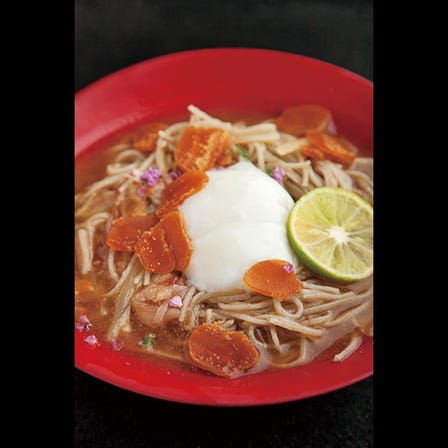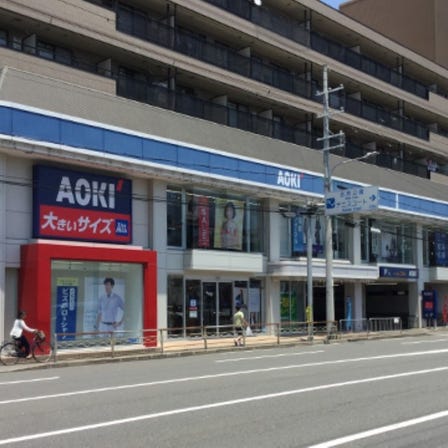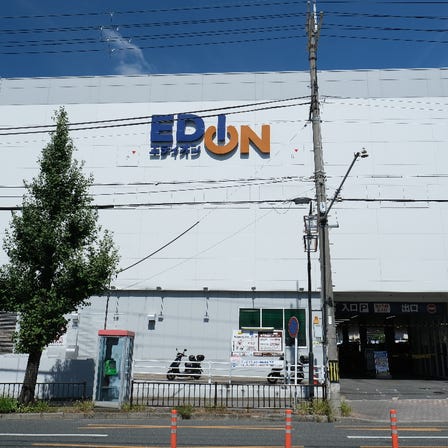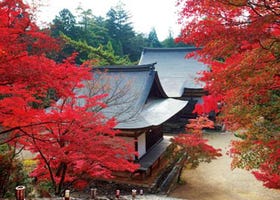Description
After Emperor Hanazono (the 95th Emperor of Japan) shaved his head and became a monk, he converted his own villa, the Hanazono Rikyu, into a Zen temple and changed its name to Myoshin-ji Temple in 1337. The temple covers an area of 330,000 square meters inside which the Shichidogaran (seven major structures in the temple compound), such as the San-mon gate, Butsuden (Buddha hall) and Hatto (lecture hall), align in a north-south direction surrounded by 46 sub-temples to create a ”temple town.” The citizens of Kyoto affectionally call the temple ”Nishi no Gosho (West Imperial Palace).” This temple is recognized as the head temple of about 3,400 temples belonging to the Myoshin-ji Temple school among approximately 6,000 Rinzai sect temples throughout Japan.
Dragon staring all directions from the ceiling
If you look up to the ceiling in the Hatto, built to commemorate the 300th anniversary of the death of Kanzan Egen in 1656, you'll spot a picture of a heavenly dragon in the clouds. It took the painter Tanyu Kano eight years to complete the artwork. The dragon is called ”Happo Nirami no Ryu (Dragon that stares all directions)” because the dragon mysteriously seems to be staring back at you no matter which direction you look at it from.
Japan's oldest temple bell, which enchanted Kenko Yoshida
The temple bell in the Hatto is known as the ”Ojikicho Bell (bell of the Ojiki mode, or one of the six main modes of gagaku)” and has been designated as a National Treasure. Previously housed in the Jo Kongo-in Temple that was later abolished, the bell is Japan's oldest temple bell with an inscription that indicates its age. Kenko Yoshida's Tsurezure-gusa (a collection of essays written in the early 1330s) mentions it: ”The tone of the bell should be of the Ojiki mode. […] The tone of the bell in Jo Kongo-in Temple is of the Ojiki mode, too.”
See a masterpiece of early Suiboku-ga ”Hyonenzu” at a sub-temple with a wonderful garden
Taizo-in Temple, one of the sub-temples at Myoshin-ji Temple, holds the Shihon Bokuga Tansai Hyonenzu by Josetsu. This is a masterpiece of early Suiboku-ga (india-ink paintings) and has been designated as a National Treasure. Hyonenzu is a painting that renders a koan (analects about Zen) on how to hold down a slippery catfish with a slick gourd. The original has been deposited at the Kyoto National Museum; the one on display at the temple is a reproduction. This sub-temple is also famous for its beautiful garden and weeping cherry blossom trees.
Location Information
-
- Address
-
1, Hanazonomyoshinjicho, Ukyo-ku, Kyoto-shi, Kyoto, 616-8035
-
- Nearest Station
-
Hanazono Station
・ JR Sagano Line
・ JR San-in Line
5 minutes on foot
-
- Phone Number
-
075-461-5226Available languagesonly in Japanese
-
- Hours
-
9:10am - 4:40pm
9:10am - 3:40pm
*From November to February
-
- Closed
- None
-
- Public Site
- Official Site
Recommended Spots in Area
- Visiting
- Eating
- Shopping
- Lodgings
-
 Ninna-ji TempleArashiyama, UzumasaTemples
Ninna-ji TempleArashiyama, UzumasaTemples -
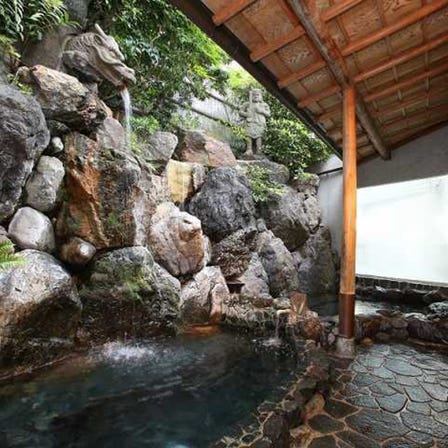 Funaoka OnsenKinkakuji Temple, KitayamaHot Springs (Onsen) & Bath Houses (Sento)
Funaoka OnsenKinkakuji Temple, KitayamaHot Springs (Onsen) & Bath Houses (Sento) -
 Former Imperial Villa Nijo-jo CastleNijo Castle, Kyoto Imperial PalaceCastles
Former Imperial Villa Nijo-jo CastleNijo Castle, Kyoto Imperial PalaceCastles -
 Ryoan-ji TempleArashiyama, UzumasaTemples
Ryoan-ji TempleArashiyama, UzumasaTemples -
 Hirano Jinja ShrineKinkakuji Temple, KitayamaShrines
Hirano Jinja ShrineKinkakuji Temple, KitayamaShrines -
 Nishijin Textile CenterNijo Castle, Kyoto Imperial PalaceFabrics
Nishijin Textile CenterNijo Castle, Kyoto Imperial PalaceFabrics
-
Moxy Kyoto (Marriott Group)Nijo Castle, Kyoto Imperial PalaceHotels
-
Hotel Utano Kyoto BeshoArashiyama, UzumasaRyokan
-
Kunju Xiang Po Po InnNijo Castle, Kyoto Imperial PalaceVacation Homes
-
Hostel Sui KyotoNijo Castle, Kyoto Imperial PalaceJapanese Guest Houses (Minshuku)
-
La'gent Hotel Kyoto NijoNijo Castle, Kyoto Imperial PalaceEconomy Hotels
-
Kyoto My PensionArashiyama, UzumasaUnique Hotels













